
Are you looking to modernize your application’s backend but need help choosing the right technology stack? If you want to update its look and feel and optimize its performance, Javascript is a natural choice, but what JS framework to choose? Let’s look at Node js, as with it, you can build server-side part, too.
Building backend with node js is not a new practice, so you do not have to take the risk and be a pioneer. Big players like PayPal, Netflix, and NASA have proven its effectiveness.
In this article, our experts will describe the benefits of using Node.js and answer whether node js is frontend or backend technology and which problems it solves. In the end, you will figure out whether this technology is a good fit for you and learn about the node.js development services we provide.
What Is Node.js?
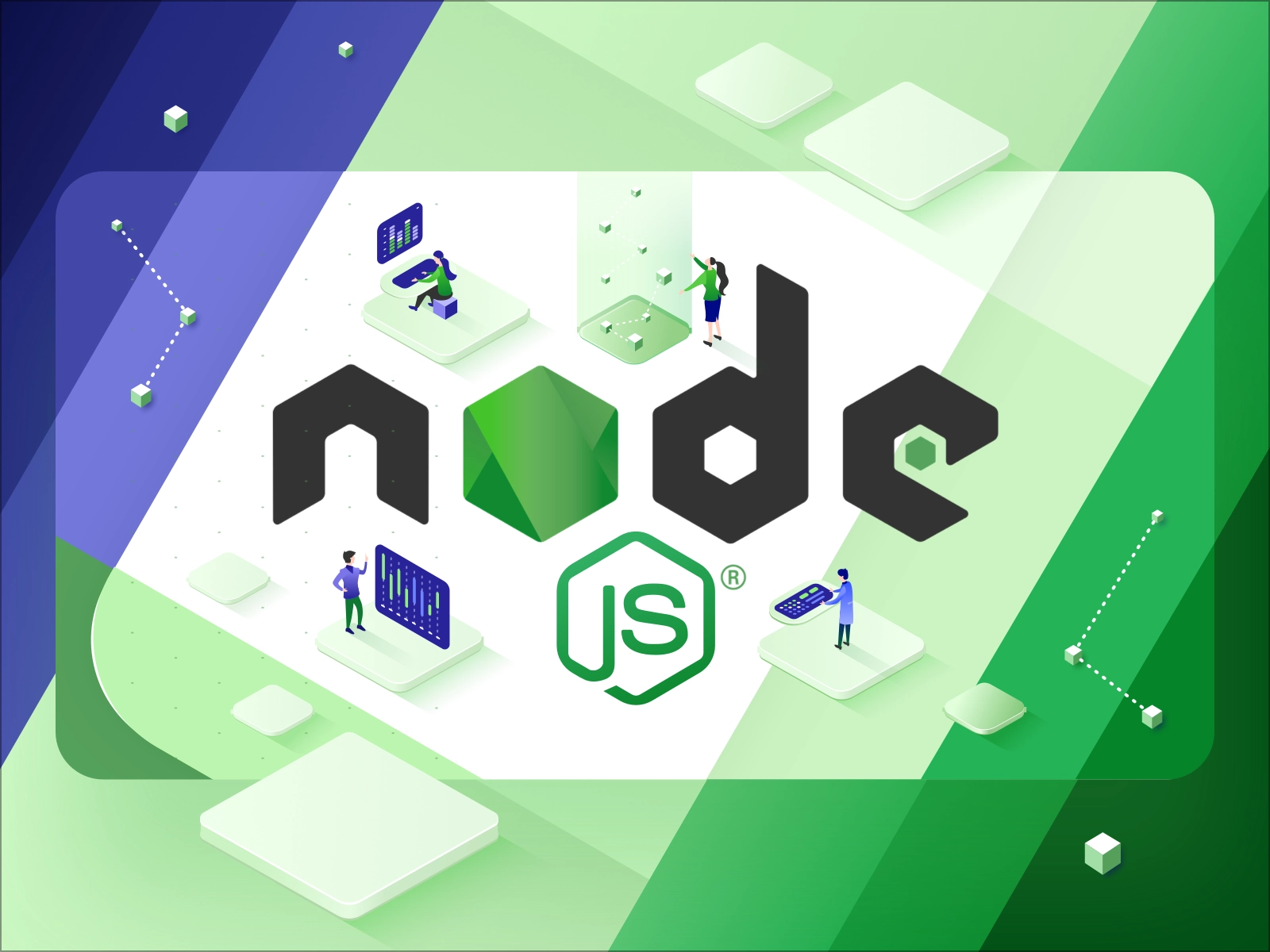
Created by Kate Musaieva
Let us start with the definition. Node.jsis a server runtime environment for JavaScript. This technology allows engineers to use the same language for server and client development. Its event-driven architecture supports asynchronous input and output, making it perfect for building FRP (Functional Reactive Programming) apps.
It was first introduced by Ryan Dahl back in 2009. At that point, node js was not popular because it worked only for macOS and Linux. Two years later, when he introduced a Windows-friendly version, the number of Node.js projects started proliferating.
Basically, Node.js has laid the foundation for the “JavaScript everywhere” paradigm. Since then, JS developers have turned from frontend development to full-stack.
To run Node.js, you need to connect a software packaging system module. There are several to choose from, but the most popular are Yarn and NPM. NPM (Node Package Manager) is a default one for Node js. It allows you to search for packages in the command line, install them, and set the dependencies.
Yarn is the most known alternative for NPM that combines package and project management features. The top reason to choose it over its competitor is the ability to run parallel package installation, improving performance. Also, Yarn has enhanced security features.
Node.js Popularity
According to the StackOverflow survey, Node.js was the most popular (47.12%) web technology in 2022. Tech giants such as Netflix and Uber have recently moved to this stack.
No surprise here because JavaScript remains the most-used programming language for the ninth year in a row. It was initially intended to fulfill the needs of client-side web development, but in recent years developers have been actively using it for server-side development too. It became possible thanks to Node js.
Both professional developers and engineering newbies prefer Node.js since the demand for experts in this technology is rapidly growing.
Many professionals ensure healthy competition among developers so you can always find node js web development services at a reasonable price.
Node.js Frameworks
JavaScript is relatively straightforward. With various frameworks, it becomes even easier to deal with. Software development frameworks are aimed to give the programming language some structure and guide the engineers throughout the app development process.
All of them keep core features of Node js:
- They are open-source
- They support event-driven architecture
- They allow scalability
- They enable the building of real-time applications
Let us take a look at the most popular Node.js backend frameworks. They are:
Express Js
Express Js is a top choice for those who want to master Node js. It is a de facto Node js standard, certified by MIT. For this, you need only basic OOP or FP knowledge and a bit of familiarity with the chosen technology.
Express has various use cases: it serves for API coding, has HTTP helpers, and goes under MVC (Model-View-Controller) application architecture development pattern. It simplifies test case development and lets you maximize coverage with minimum effort.
On top of that, Express Js allows you to build the frontend part of the app, which makes this technology truly multifunctional.
Nest.Js
This Node.js progressive framework utilizes JavaScript and a TypeScript programming language. It is used primarily for building scalable server-side apps. However, it may serve other purposes too.
Nest.js is super friendly to work with, even for JavaScript beginners. Nowadays, more and more developers tend to prefer Nest.js over Express.js. The reasons are its broader functionality, ease of use, and more robust structure.
Although Nest.js is new, you should be okay with choosing it. Many worldwide-known companies have preferred it to build their applications, for example, Autodesk, Adidas, and Capgemini.
Meteor.Js
Meteor.Js is alive and used in application development. Released in 2012, it still has got a lot of admirers. It is a full-stack framework, so you can also find tools for building UI. That makes Meteor.Js an excellent choice for rapid app prototyping.
This framework is cross-platform, which is handy when your app should run on Microsoft Windows, Linux, and MacOS devices and all browsers, including the mobile version.
MERN
MERN (MongoDB, Express.js, React.js, and Node.js.) is a complex framework. Built upon backend node js, it utilizes several technologies and combines their benefits.
This framework enables a fast and seamless connection of databases as well as lets you build the front end for your app. There is also a slightly different version of MERN called MEAN. This version uses Angular instead of React, but in terms of backend technologies, it provides a similar experience.
Ember.Js
This Node js framework is used basically for web applications. It could be applied both for coding business logic and connection to databases as well as for building fancy UI.
Although Ember Js is limited to building web applications, such specialization adds winning points when looking for an optimal Node js-based web development framework.
If you are done with the backend framework choice but still need to find the right frontend solution, here we have a hint for you. Our previous article provided a detailed overview of frameworks that were not covered here.
Is Node.js used for Frontend or Backend?
Most people know node js as a backend technology, but it is only partially true. If the goal is to build a backend using JavaScript, there are no alternatives for Node.js. However, Node is not limited to making the server-side of apps. Let us shed some light here and educate you about other use cases.
Complex node js frameworks have made app prototyping much more manageable. Several frameworks, such as Express.js and Meteor.js, include backend and frontend tools. It allows developers to build the whole app using a single language and set of frameworks both for the client and the server side. This approach speeds up the development process and prevents compatibility issues.
Moreover, Node.js could also be used solely for building an app’s interface. Its typical use case is building UI for real-time apps. Those require data refresh supported with async requests. Node js is capable of that, which makes it a perfect fit.
To be short, Node.js is multifunctional, so we can call it a full-stack technology.
Advantages of Using Node.js In Backend Development
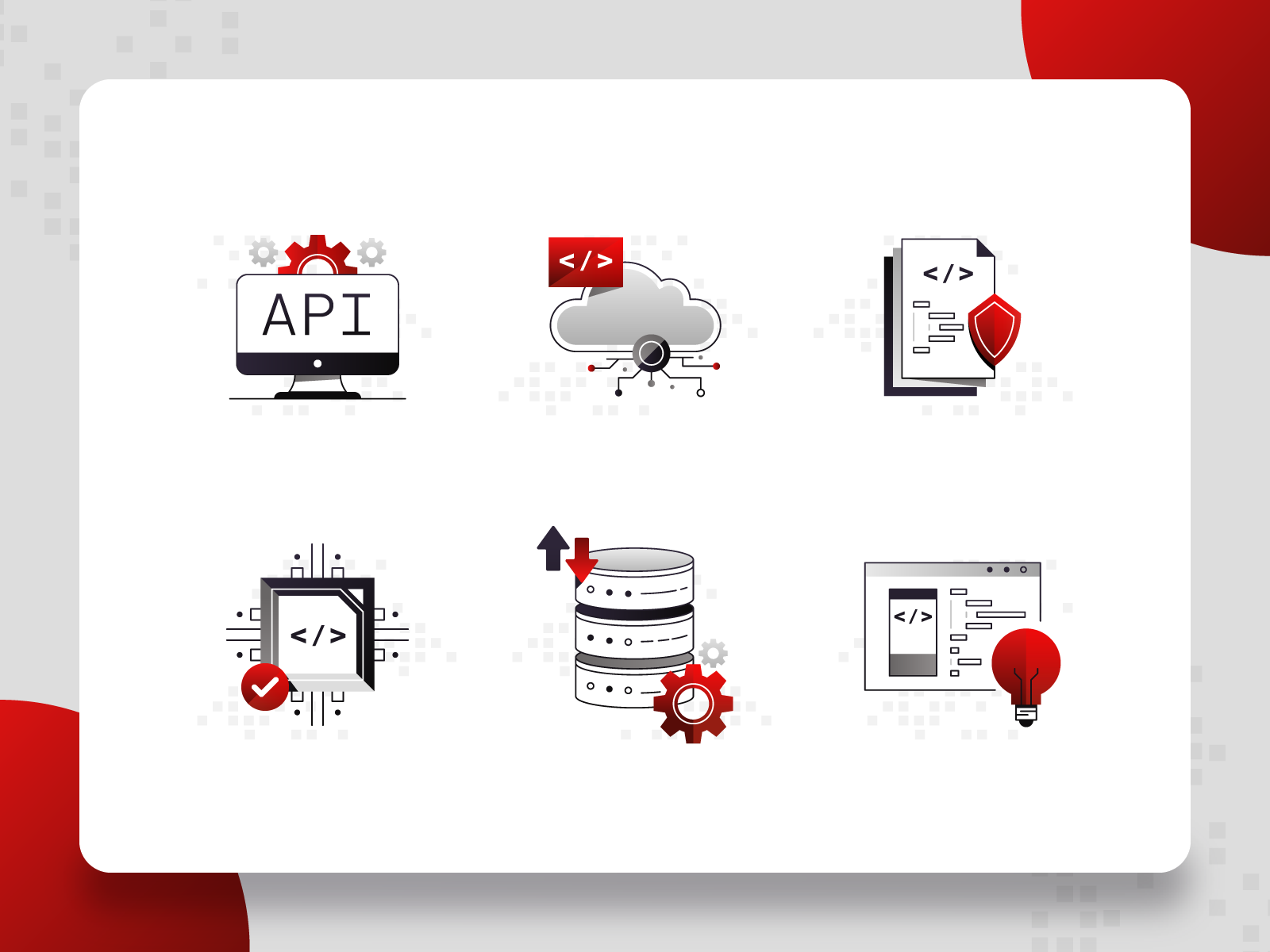
Created by Samuel Oktavianus
Here are its top advantages:
Full-fledged Full-stack
Node.js allows you to use JavaScript both for client and server-side development. Such an approach enables you to treat your JS engineers as full-stack specialists and build an application with limited human resources.
If you need people with the right expertise on your team, consider hiring node developers from Fireart. They will help you put a full-stack JavaScript project on track quickly and effortlessly.
High Development Speed
This technology has a bunch of time-tested frameworks and package managers. You can use default ones or proceed with advanced options — all of them provide core node js features and large open-source libraries.
Both backend and full-stack frameworks will noticeably shorten the development time.
Fast App Performance
Node.js stores and utilizes data in native JSON, so data streaming becomes way faster. You should not worry about audio and video streaming and messaging. With the V8 JavaScript engine, your web app content will load without interruptions.
Also, Node allows sending asynchronous requests, which works great for apps with numerous APIs. All processes are non-blocking as they run in threads instead of queues.
Support Expanding Projects
With Node.js, you can build scalable applications. It is possible thanks to its full-stack potential. You can create a fully independent microservice with its UI, business logic, and database with a node toolset.
Competitive Market of Node js Developers
Since JavaScript is the world’s most popular programming language and this technology is relatively easy to learn, many developers have node js projects in their portfolio. Thus, you can choose from a large pool of professionals and save some costs.
In 2019 Node.js community and the JS foundation formed OpenJS Foundation, the world’s biggest JavaScript collaborative think tank.
Large Choice of Tools and Libraries
Since Node.js is open-source, anyone is free to contribute. Many developers share their accomplishments, and you can save time reusing the results of their work. You can also contribute by uploading your own materials.
Disadvantages of Using Node.js in Backend Development
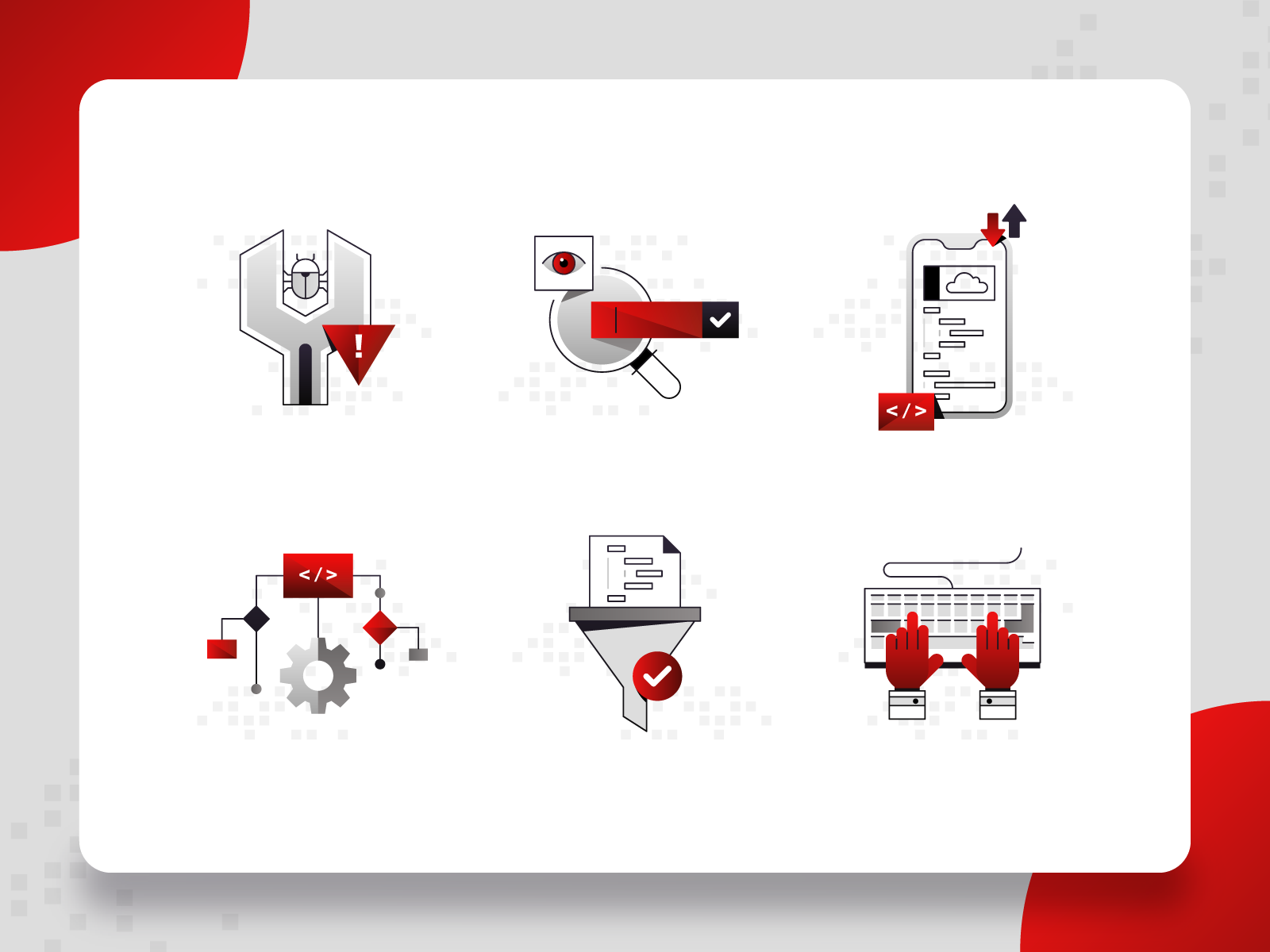
Created by Samuel Oktavianus
Toolset Lacks Quality
Node.js is an open-source technology. Even though we previously stated that as an advantage, it might cause severe problems like any free tool does.
When working with it, be mindful of your libraries and components. Among the most common problems, Node.js users state are immature toolsets. Some of them may be created by amateur devs, and they still need to be tested well. Also, some libraries may lack the necessary elements.
There is no built-in instrument to sort its tools based on rating or quality, so consider browsing reviews on developers’ forums. However, you should be fine with core modules as they follow high coding standards. Node js community members verify them accurately.
Callbacks Issue
Whenever you have some experience with JavaScript, you realize how much of a problem callback issues might be. They not only make your code hard to read but also cause lots of errors.
Callback issues constantly happen when you are coding with JavaScript. Even though they are typical, they are impossible to avoid due to Node.js async nature. The larger the queue of tasks your backend runs, the more callbacks you have. In the end, you arrive at the so-called “callback hell“.
With pair programming and explanatory comments routine, you may reduce its harmful impact but cannot entirely fix it.
When Node Web Application Development is Recommended
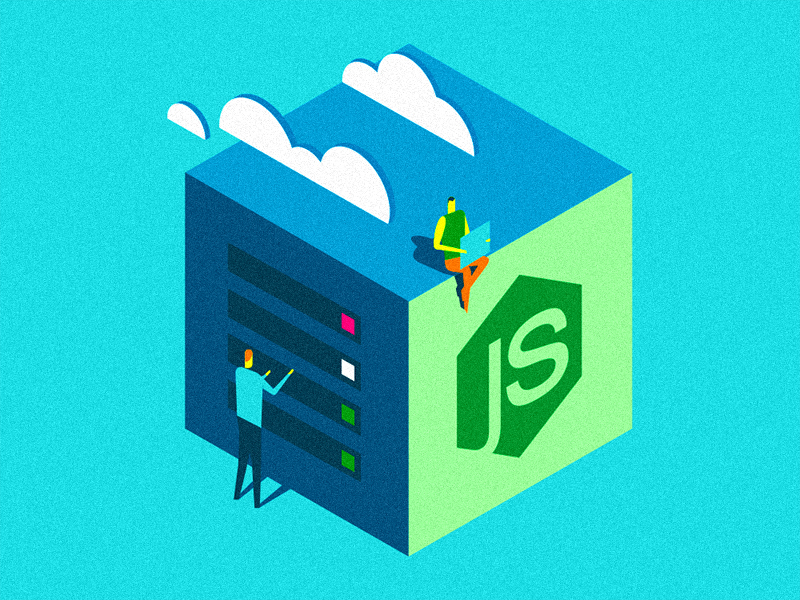
There are several factors to consider when choosing the primary tool in node web development. If the statements below describe your project, then Node js is the right choice for you.
Speed and Responsiveness Are On Top Of the Requirements
When talking about customers’ attention, milliseconds make millions. Regarding e-commerce and travel, even 0.1s speed improvements result in a significant conversion rise.
Node Js allows to reduce web page loading time and retains more customers. Wherever you use sales funnels, it works well. This might apply to hotels or ticket booking apps, live chats, marketplaces, or social networks.
You Need to Stream Data From Lots Of Different Sources
As you already have learned, Node.js may handle async requests. It is a perfect solution for web applications displaying data from different sources. Node’s non-blocking architecture allows it to source data from various third-party APIs.
Examples of such data structures are banking, weather, and real-time traffic dashboards. They always display up-to-date info and do not require being refreshed.
Your Want to Refresh Legacy Enterprise-level Software
It is a known fact – legacy enterprise software products make developers suffer. However, there is a way to reduce the pain. If your software product is built from microservices, you can update them one by one. In this case, you can use Node js to keep it simple and leave the room to be scaled.
Recently, Node has been adopted by such tech giants as Netflix, Capital One, and NASA. It may work for you too.
When Not to Use Node.Js
Each technology has its weaknesses. For Node.js, they are:
CPU-intensive Applications
Examples of backend node js-unfriendly tasks are operations that take much of the device’s RAM. These could be gaming activities or, for instance, online content editing.
You might argue that we claimed Node js could handle multiple input/output requests simultaneously. That’s true, but there is always a main thread. CPU-bound tasks block it, so other jobs in a queue should wait until the main thread is executed. Such an effect negatively impacts user experience.
Heavy Computation
Even though Node successfully masters seamless data sourcing and renewal, it has a bad reputation as a heavy computation tool. Long-running calculations may loop or start blocking other requests.
Node.js may still handle such a complicated load. However, app performance will decrease. We recommend going for other technical solutions if your app requires heavy computations.
Node.Js Alternatives For Backend
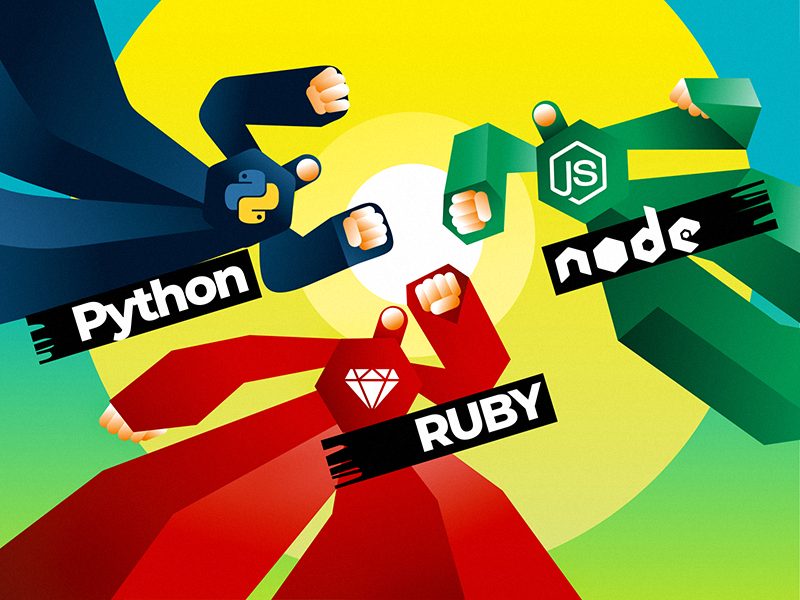
Created by Anna Shagova
If your project falls under cases where we do not recommend using Node.js, you can choose the other option for server-side development, especially if you are not tied specifically to JS.
You may consider one of the following backend development solutions featuring other programming languages:
PHP
According to a backend development community survey PHP is still the leading choice for server-side development. Up to 77% of web applications use it in 2023.
This option is a good fit for you when your app requires complicated database management. PHP supports integration with relational and non-relational databases and all database management systems such as MySQL, Postgresql, Oracle, and Maria DB. At the same time, PHP supports dynamic content display, making it a strong competitor to Node js.
The perfect example of PHP server-side development use cases are high-loaded eCommerce applications.
Python
Python is less popular than PHP but has its own niche. It is applied primarily in web apps that require heavy computations. For example, AI development, numerical calculations, and machine learning.
If you need to perform any kind of data science, consider using Python. However, it is much slower than Node js, so you need to choose between speed and complexity in this pair.
Java
This programming language is the most common choice for enterprise web applications backend. Its frontend capabilities are limited. However, you may use a combination of Java and JavaScript to build high-quality UI.
It is one of the most robust server-side development languages. You can build everything you can imagine with Java, from scientific applications to eCommerce. We can name effective memory management, scalability, and security, among other advantages.
Ruby
It might be the less obvious alternative, but we encourage you to consider its potential for backend web development. Ruby is a great option when your goal is to handle intensive web traffic or to perform CPU-intensive tasks. It can handle more requests at the same time than Node js does.
Ruby is slower and configurable than Node js. However, for heavy tasks, it is a perfect fit. Ruby On Rails framework adds some speed, but there are quite a few specialists who work in that approach available in the market nowadays.
Time to Upgrade Your Web Application With Fireart Studio
In this article, we have walked you through Node.js pros and cons and provided you with several frameworks to choose from. We hope that you have some insights from it.
To sum up, Node js is an optimal choice for the server side of your web app if it falls under one of the following cases:
- Speed and responsiveness are on top of your non-functional requirements list
- Your application has to request data from many different sources and display it in real-time
- You want to upgrade the large enterprise-level system based on microservices step by step
- You are planning to build an application from scratch and want it to be JavaScript only
- Your app does not require heavy computations, and it is not hard on CPU
If one or more points are true about your upcoming project, consider using Node.js.
Also, Fireart studio experts may audit your existing projects and advise whether Node js is a good upgrade solution for you. Also, if you need more development resources to cover your needs, we offer experienced backend developers and Node.js consultants. It is never too late to migrate your projects to this technology; we will make it together.






![Fireart is Rated as the Top Product Design Company on Clutch [2020]](https://fireart.studio/wp-content/uploads/2020/04/shotpodcast_4x.png)














